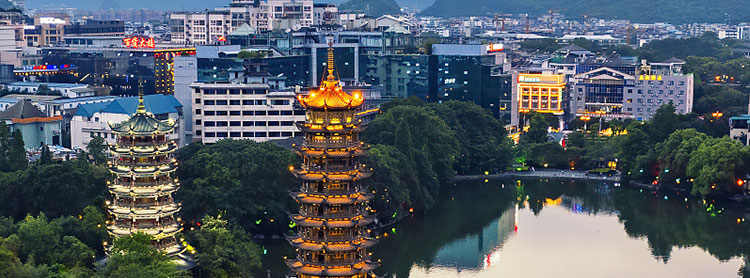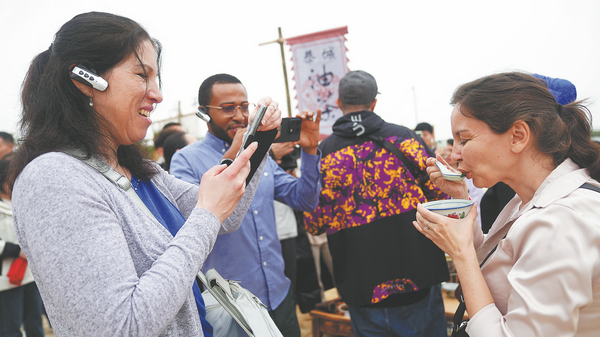
 Media Center
Media Center

Foreign visitors enjoy Gongcheng oil tea in a cultural event in Beihai, Guangxi Zhuang autonomous region. CHINA DAILY
Gongcheng oil tea depends on tradition and technique to produce a tasty and aromatic treat, Yang Feiyue reports.
Rhythmic thumping cuts through the early morning stillness in the lanes and alleys of Gongcheng Yao autonomous county in Guilin in the Guangxi Zhuang autonomous region. The sound is being made by local residents pounding fresh tea leaves with wooden hammers, before garlic, ginger and peanuts are added, and mashed together with water and oil in a heated iron pan.
Delicious aromas waft through the air.
Every so often, some of the mixture is removed and filtered through a bamboo sieve, producing a soupy beverage with a greenish yellow tint.
This liquid is the base for Gongcheng oil tea, which is usually served with a range of condiments, including steamed or roasted rice, nuts, parsley and chives. Their soft and crunchy textures create an intriguing palate experience.
The Yao people believe the beverage ensures mental vitality and sharpness, and soothes internal organs.
"Making Gongcheng oil tea is a meticulous process, both in terms of the selection of ingredients and their preparation," says Zhou Liwei.He is an inheritor of the Gongcheng oil tea-making practice that was listed as a national intangible cultural heritage in 2021, which was included in the UNESCO Representative List of the Intangible Cultural Heritage of Humanity in 2022, as part of traditional tea processing techniques and associated social practices in China.
"Its distinctive feature lies in the process of hammering, which results in a flavor that is quite different from tea made by steeping, brewing, boiling or simmering,"says Zhou, who is in his 40s, and has practiced the art with his elders since he was a child.